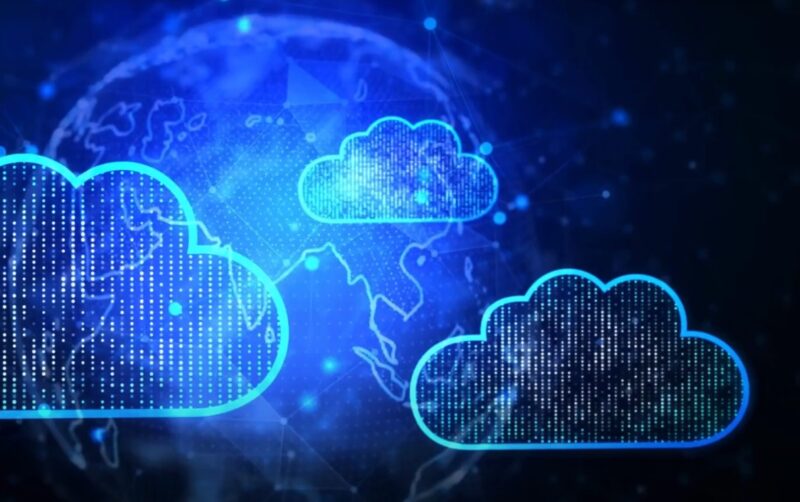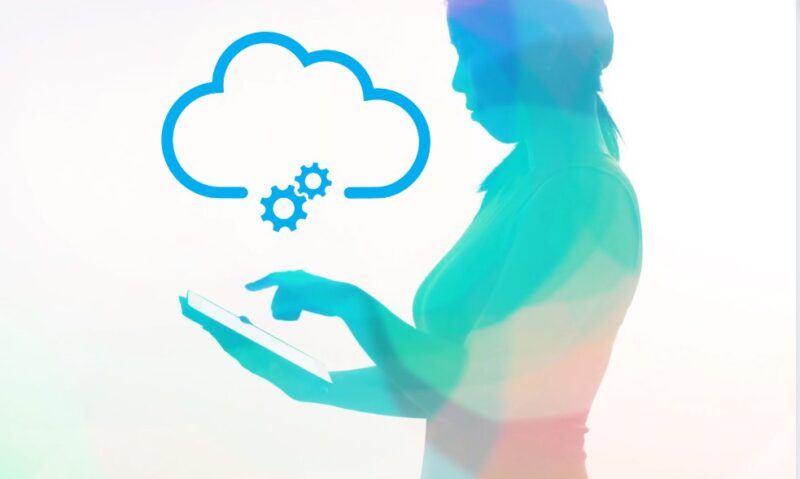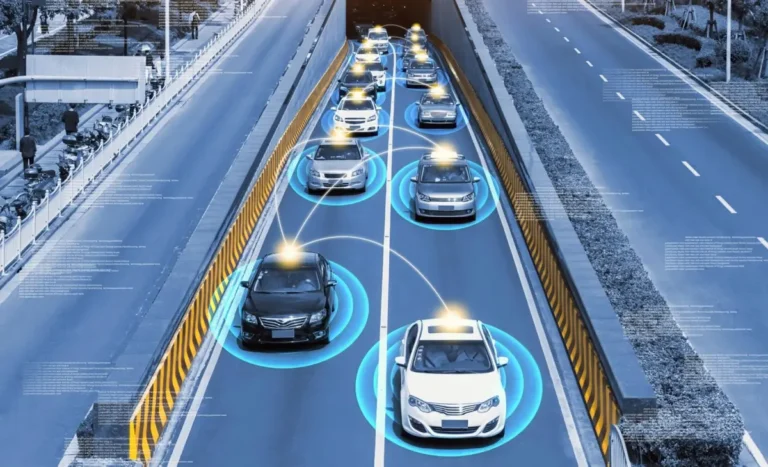Cloud computing is like a virtual toolbox that’s always there when you need it. Imagine having a supercomputer that you can access from anywhere, anytime, without having to worry about the hardware or software.
That’s cloud computing for you! It’s the on-demand availability of computer system resources, especially data storage and computing power, without direct active management by the user.
Fun Fact: The term “cloud” in computing has an interesting origin. It was used as a metaphor for the internet, dating back to 1994, when General Magic used it to describe the universe of “places” that mobile agents in the Telescript environment could go.
Evolution and Historical Context
The roots of cloud computing stretch back to the 1960s, with the concept of time-sharing and the “data center” model. The idea was to make large-scale computing power available to more users through time-sharing.
| Year | Event |
|---|---|
| 1994 | The term “cloud” used as a metaphor for the internet |
| 2002 | Establishment of Amazon Web Services |
| 2006 | Beta version of Google Docs released |
| 2010 | Microsoft launches Microsoft Azure |
Cloud computing has become a cornerstone in the modern technology landscape. It offers flexibility, scalability, and cost savings. Since the global pandemic of 2020, cloud technology has surged in popularity due to the level of data security it offers and the flexibility of working options it provides for remote workers.
Core Concepts
The core concepts of cloud computing can be broken down into five essential characteristics:
- On-demand self-service: You can provision computing capabilities as needed automatically without requiring human interaction.
- Broad network access: The services are available over the network and accessed through standard mechanisms.
- Resource pooling: Multiple consumers share the provider’s computing resources.
- Rapid elasticity: Capabilities can be provisioned and released to scale rapidly with demand.
- Measured service: Resource usage can be monitored, controlled, and reported.
Types of Cloud Services

Infrastructure as a Service (IaaS)
IaaS provides high-level APIs used to abstract various low-level details of underlying network infrastructure. It’s like renting a virtual space where you can build whatever you want without worrying about the physical aspects.
Platform as a Service (PaaS)
PaaS offers a computing platform, including an operating system, programming-language execution environment, database, and web server. It’s like having a ready-made stage where you can perform your show without setting up the stage itself.
Software as a Service (SaaS)
SaaS allows users to access application software and databases managed by the cloud provider. Think of it as using a software application online without having to install it on your computer.
Function as a Service (FaaS) / Serverless Computing
FaaS is a remote procedure call that utilizes serverless computing. It’s like having a personal assistant who takes care of specific tasks for you without you having to manage them.
Pro Tip: Choosing the right type of cloud service depends on your specific needs and goals. Consider factors like scalability, control, and cost when making your decision.
Deployment Models
Cloud computing offers different deployment models, each catering to specific needs and scenarios. Let’s explore these models:
- Public: Like a big community garden. It’s owned and operated by third-party cloud service providers and delivered over the internet. Anyone can use or purchase these services. It’s highly scalable and cost-effective since you only pay for what you use.
- Private: Your personal garden. It’s used exclusively by one business or organization. A private cloud can be physically located in your company’s on-site data center or hosted by a third-party service provider. It offers more control and security.
- Hybrid: Best of both worlds. It combines public and private clouds, allowing data and applications to be shared between them. This model provides greater flexibility and more deployment options.
- Community: A shared infrastructure used by several organizations that have common concerns. It’s like a community center where specific groups gather. It can be managed internally or by a third-party provider.
Advantages
Cloud computing offers numerous advantages that have revolutionized the way we work and interact with technology.
It allows businesses to avoid the upfront cost of purchasing hardware and software. It’s like renting a car instead of buying one; you only pay for what you use.
- You can scale up as your business grows or scale down as demand decreases. It’s a flexible system that adapts to your needs.
- Cloud computing enables remote access to work resources, allowing collaboration from anywhere in the world. It’s like having your office in your pocket!
- Offers robust disaster recovery solutions. It’s like having a safety net that ensures your data is secure and accessible even if something goes wrong.
- Promotes better resource utilization, reducing the carbon footprint. It’s a step towards a greener future.
Fun Fact: Did you know that by using cloud computing, companies can reduce energy consumption by up to 30%? That’s a significant contribution to environmental sustainability!
Challenges and Considerations
| Challenge | Consideration |
|---|---|
| Security and Data Privacy | Ensure robust security measures |
| Reliability and Potential Downtime | Choose a reliable provider, have a backup plan |
| Vendor Lock-in | Consider flexibility and future needs |
| Compliance and Regulatory Issues | Adhere to industry-specific regulations |
Real-World Applications

Beyond just a buzzword; it’s a technology that’s transforming various industries and aspects of our daily lives. Let’s explore some real-world applications
Business Operations
From small startups to large corporations, cloud computing is like a Swiss Army knife for businesses. It offers tools for data storage, collaboration, customer relationship management, and more. It’s a one-stop solution that caters to diverse business needs.
Software Development and Testing
Developers, rejoice! Cloud computing provides a virtual playground where you can develop, test, and deploy applications without worrying about the underlying infrastructure. It’s like having a sandbox where you can build and experiment freely.
Big Data Analytics and Machine Learning
Cloud computing powers big data analytics and machine learning, enabling businesses to analyze vast amounts of data. It’s like having a magnifying glass that helps you uncover insights and trends.
Internet of Things (IoT) Platforms
IoT and cloud computing go hand in hand. Cloud platforms support IoT devices, allowing them to communicate and interact. It’s like the nervous system of a vast network of interconnected gadgets.
Content Streaming and Online Services
Ever wondered how you can binge-watch your favorite shows without a glitch? That’s cloud computing at work! It powers content streaming and online services, providing a seamless entertainment experience.
Pro Tip: When considering cloud computing for your business or personal use, think about how it aligns with your specific goals and needs. The applications are vast, and the possibilities are endless!
Future Trends

Not just a passing trend; it’s here to stay and evolve. Here’s a glimpse into the future of cloud computing:
- Edge computing takes processing closer to the data source, reducing latency. It’s like having a local bakery instead of getting bread from miles away.
- Serverless computing is growing, allowing developers to focus on code without managing servers. It’s a step towards a more efficient and streamlined development process.
- The future is flexible, with hybrid and multi-cloud strategies allowing businesses to leverage the best of different cloud environments. It’s like having a wardrobe with different styles for different occasions.
- With growing concerns about data security, the future of cloud computing will see a stronger focus on robust security measures. It’s like fortifying your castle in an ever-changing landscape.
- Quantum computing might seem like science fiction, but it’s inching closer to reality. Its potential impact on cloud computing could be revolutionary, opening doors to new possibilities.
Fun Fact: Quantum computing operates on principles that allow it to perform complex calculations at speeds unimaginable with current computers. It’s like comparing a horse-drawn carriage to a supersonic jet!
FAQ
What Exactly is the “Cloud” Computing?
Refers to servers accessed over the internet, along with the software and databases that run on those servers. It’s like a virtual space where data lives.
Is My Data Safe on the Cloud?
Data security depends on your provider and the measures they implement. It’s like choosing a bank; you want one with robust security.
Can I Switch Between Different Cloud Service Providers?
Yes, but it may require careful planning and consideration of compatibility issues. It’s like moving houses; you need to ensure everything fits.
How Does Cloud Computing Impact Internet Speeds?
It does not itself impact internet speeds, but your connection might affect how quickly you can access services. It’s like the speed of a car depending on the road’s condition.
What Are Some Popular Examples of SaaS Applications?
SaaS applications include Google Workspace, Microsoft Office 365, Salesforce, and Zoom. They’re like the everyday tools in your virtual toolbox.
How Does Cloud Computing Affect Small Businesses?
Provides access to powerful tools without significant upfront costs. It’s like having big-business resources on a small-business budget.
What Are the Cost Considerations for Using Cloud Services?
Costs depend on the services, scale, and provider. It’s like choosing a meal plan; you pick what fits your appetite and budget.
How Do I Choose the Right Type of Cloud Deployment for My Needs?
Consider factors like control, cost, scalability, and compliance. It’s like choosing a home; you want one that fits your lifestyle and needs.
What Is the Relationship Between Cloud Computing and Virtualization?
Virtualization is a technology that enables cloud computing by creating virtual versions of physical resources. It’s like having virtual rooms in a physical house.
Are There Any Environmental Concerns Related to Cloud Infrastructure?
While more energy-efficient than traditional computing, but considerations like data center locations and energy sources matter. It’s like choosing an eco-friendly car; you need to look at the details.
Final Words
Cloud computing is more than just a technological trend; it’s a transformative force that’s reshaping the way we interact with the digital world. From businesses leveraging the cloud’s flexibility to individuals enjoying seamless entertainment experiences, the applications are vast and growing.
The future looks promising, with advancements like quantum computing and increased focus on security. As we continue to explore and adopt technologies, we’re not just embracing innovation; we’re opening doors to new possibilities and efficiencies.
So, whether you’re a business leader, a developer, or simply curious about technology, the cloud is waiting for you.
Related Posts:
- Edge Computing vs. Cloud Computing: What You Need to Know
- Data Center Design 101: Everything You Need to Know
- Data Center Networking 101: Everything You Need to Know
- Satta Matta Matka Explained - Everything You Need to Know
- Different Types of Cloud Computing and How They Differ
- Planning Your Everest Adventure – What You Need to…








